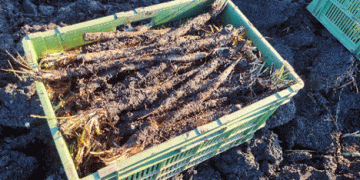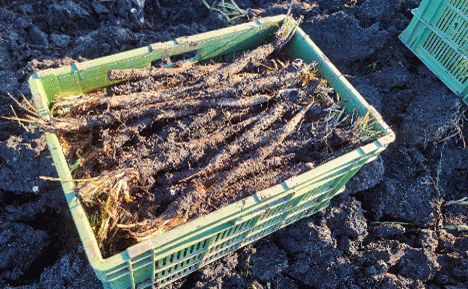Salsify, a unique and often overlooked winter vegetable, is slowly carving out its niche in Switzerland’s agricultural landscape. According to the Agricultural Information Service (LID), salsify is cultivated on approximately 11 hectares across the country, with over half of this area dedicated to organic farming. The growing interest in this “winter asparagus” reflects a broader trend of reviving traditional and lesser-known crops, particularly in the context of sustainable agriculture.
A Brief History and Cultivation Insights
Originally hailing from Southern Europe, North Africa, and the Near East, salsify was introduced to Central Europe from the Iberian Peninsula in the 17th century. Its fibrous, white interior is reminiscent of traditional asparagus, giving it the local nickname “winter asparagus.” In Italy, it is referred to as “Scorzone,” or “poisonous black snake,” a name that may relate more to historical medicinal uses than its appearance. Medieval medicine utilized the root’s milky sap for treating snake bites, underscoring its longstanding cultural significance.
In 2023, the cultivation of salsify in Switzerland represents a small but significant aspect of the country’s diverse agricultural practices. With frost resistance, salsify can thrive in cold conditions, making it an ideal crop for the winter months. As the growing season typically spans from October to February, it fills a seasonal gap in the vegetable market, offering fresh produce when other options are limited.
Market Dynamics and Consumer Trends
Salsify’s limited production, particularly in the organic sector, contributes to its status as a rarity in the Swiss market. Farmers and market vendors are increasingly recognizing its potential, offering it fresh directly to consumers. Additionally, other European countries, such as Belgium, France, and Sweden, have also seen a resurgence in salsify cultivation, often growing it on a larger scale for canning and preservation.
As consumer demand for local and organic produce continues to rise, there is an opportunity for Swiss farmers to expand salsify cultivation and enhance its visibility in local markets. Encouraging culinary creativity, chefs and home cooks alike are discovering salsify’s unique flavor and versatility, which can be prepared in various ways—boiled, roasted, or pureed.
A Niche Worth Cultivating
Salsify represents an exciting opportunity for Swiss farmers and the broader agricultural community. As interest in sustainable and local produce grows, salsify is poised to gain popularity among consumers seeking unique culinary experiences. By promoting its cultivation and incorporating it into seasonal menus, farmers can help revive this winter delicacy, securing a place for it in Switzerland’s agricultural future.
In conclusion, the story of salsify in Switzerland reflects broader trends in agriculture and consumer behavior, highlighting the potential of niche crops to meet the demands of modern diets while celebrating the country’s rich agricultural heritage.































